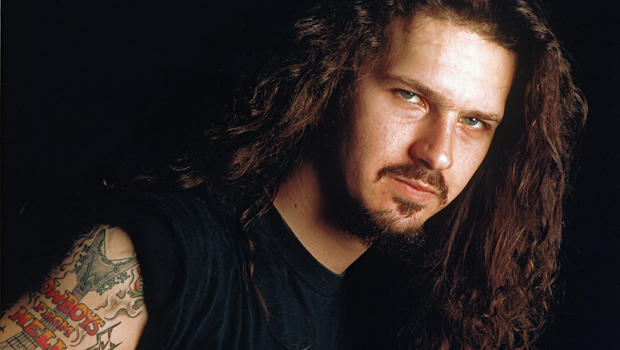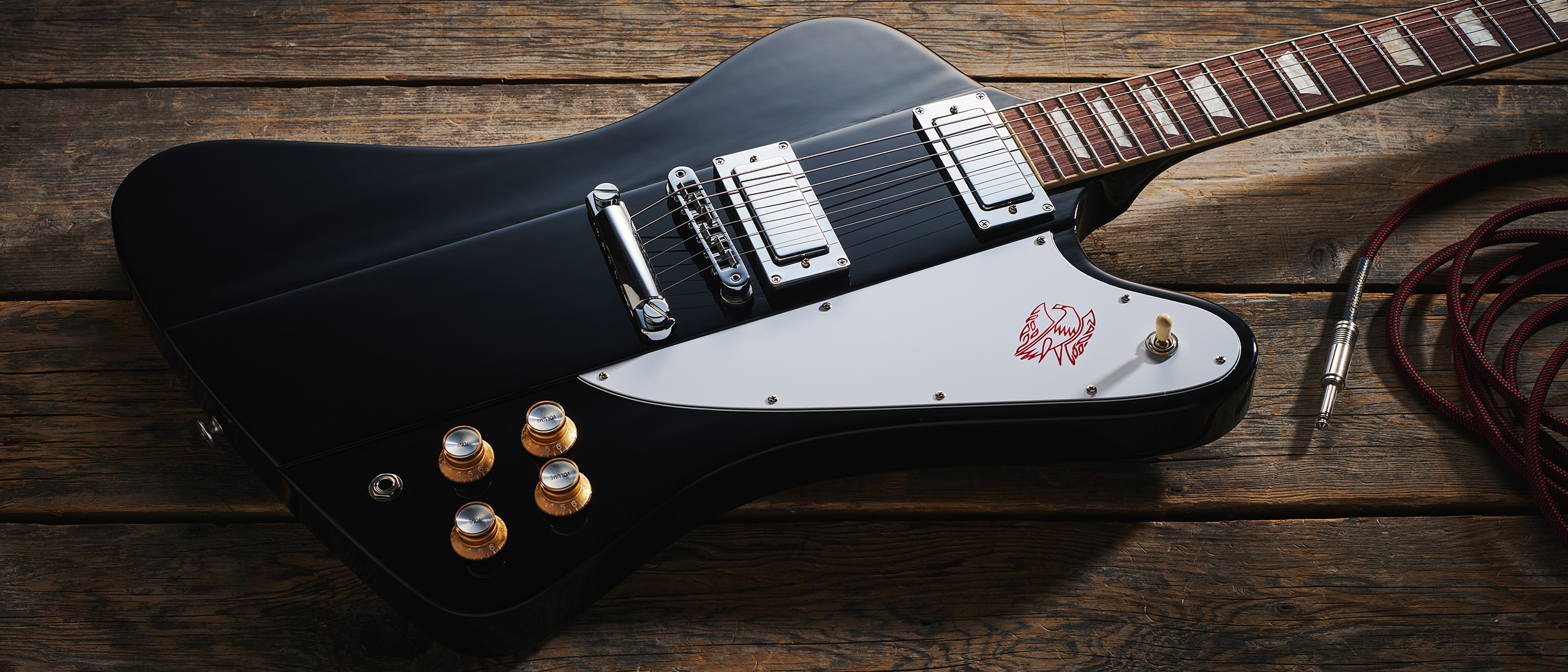Riffer Madness: Dimebag Darrell on Harmonics, Part 3

This entry comes from Dimebag Darrell's classic Guitar World column, "Riffer Madness."
What's up Dad, we're back! Last time we got into using the whammy bar to make natural harmonics scream back up to pitch. In this column we're gonna be using the bar to to pull these jewels up to notes that are higher than their regular pitch. One example is screaming the harmonic at the 4th fret (regular pitch is B) on the G string all the way up to D (Figure 1).
For you to be able to able to do this your bridge needs to be floating so you can yank the bar up as well as push it down. It's up to you to decide how you set your bridges up, but just so you know, I have my Floyd set up so that I'm able to pull a note on the G string up about two-and-and-half steps.
Basically, the technique you need to get these high-pitched bitch-bastards screaming is exactly the same as the one we talked about last month: flick the string with your left hand, dump the bar down, lightly tap the harmonic you want and then let the whammy come back up real smoothly--so the harmonic squeals. The only difference is that this time out you've gotta pull up on your bar, so that the harmonic goes past its regular pitch and up to the note you want the "scream" to end on. To do this you've gotta use your ears as well as your hands--your hands do the work and your ears tell 'em how far to go.
Backwards or forwards? The choice is yours!
To pull a harmonic up to an exact higher pitch requires some pretty close control of the bar. I've found that with the bar pointing towards the back of my guitar--towards the end strap button--I can more accurately get the note I'm aiming for, because I have to push down on the bar to get there--think about it! But whenever I'm aiming for a gut-wrenching squeal, I go for it with the bar facing the front. There's a different feel to both ways, so experiement to find which one works best for you. Backwards or forwards? The choice is yours.
Anyway, enough rapping about whammy bars and shit; let's get into some jamming. To get cooking on this new idea, check out FIGURE 2.
This has you screaming the harmonic at the fifth fret of the G string up to four different notes: G (return to pitch); A (up a whole step); B (up two steps) and C (up two-and-a-half steps). I've got you hitting a power chord before each scream, so you can hear the pitch you're aiming for just before you go for it with the harmonic. Use your ears and pay atention to the pitch. Once you've got FIGURE 2 down, try FIGURE 3, whichi s the same exact deal except without the power chords to help you out. This time you're flying blind!
Once you can nail FIGURE 3 every time, you're ready to start cuttin' up. Try squealing every harmonic you can find on every string, and never be afraid to experiment; that's how most of us come up with some of our coolest shit. The great thing about this technique is you can use it to make your guitar sing a melody or just squeal wildly outta control--it's up to you.
To finish up, I'm gonna leave you with a challenge, FIGURE 4.
This is the first melodic squeal at the end of Cemetery Gates (Cowboys From Hell), where I follow Philip's vocal melody. Here I scream the harmonic at the 4th fret on the G string up to E, which is two-and-a-half steps above its resting pitch of B. Then, after holding it there for a measure, I drop it smoothly down to C, which is half a step above its resting pitch. Thje touch thing about FIGURE 4 is that you never get to use the harmonic's resting pitch (B) as a reference point--you're either above or below it, but never on it. Good luck--and if you get this one right, treat yourself to a six-pack of beer!
The "Dimebag Darrell Riffer Madness" DVD is available through Alfred here.
Get The Pick Newsletter
All the latest guitar news, interviews, lessons, reviews, deals and more, direct to your inbox!









![Joe Bonamassa [left] wears a deep blue suit and polka-dotted shirt and plays his green refin Strat; the late Irish blues legend Rory Gallagher [right] screams and inflicts some punishment on his heavily worn number one Stratocaster.](https://cdn.mos.cms.futurecdn.net/cw28h7UBcTVfTLs7p7eiLe.jpg)
